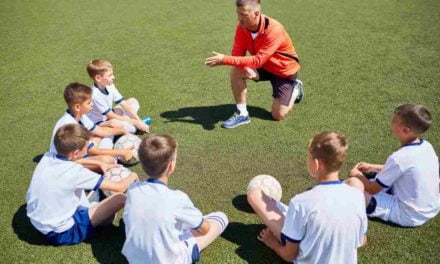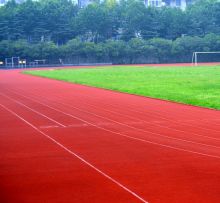Visual impairment can, in extreme cases, be a strong deterrent to participation in physical activity and PE. Impairments can range from pupils requiring glasses right up to those with a complete loss of sight.
Here are some suggestions of adaptations that PE teachers can implement to adjust their lessons and fully include visually impaired students.
Use larger balls that travel more slowly
This generic adaptation can be applied to a range of sports. Sponge balls or low-density balls are produced for a variety of sports, including specific balls for sports such as football and tennis, and larger soft balls which can be used for a range of sports such as dodgeball.
These balls travel much slower through the air, giving the visually impaired pupils significantly more time to see the object and physically respond to the object coming towards them.
In extreme cases of visual impairment, balls containing bells or balls that make a rattling sound can be purchased. These are a great addition to your PE cupboard to ensure that all pupils can be catered for.
Batting tees
Striking fielding lessons can often be very challenging for those with a visual impairment and, if not managed correctly, can lead to high levels of apprehension.
One of the easiest adaptations to make is to introduce tees for the pupils to strike the ball from. For example, small tees can be purchased and this will make your cricket lessons significantly more accessible for those with a visual impairment.
Similar pieces of equipment can be purchased for rounders/softball/baseball lessons. These pieces of equipment may also support pupils with low levels of co-ordination, and are another good addition to your equipment cupboard.
Guide runner
During athletic lessons, consider the use of a guide runner. This person is attached to the visually impaired with a running tether. This piece of equipment enables the student to fully participate in your lesson safely.
However, do make sure that the guide runner has similar (if not slightly better) running capabilities to ensure the visually impaired student is not prevented from achieving their best, and also that the guide runner is a trustworthy individual who fully understands their role.
Other self-paced athletic events (e.g. shot putt/discus) need very little adaptation but just be extra aware of the usual safety considerations and ensure that the visually impaired athlete is throwing/standing in the correct place.
Inclusive sports for children with visual impairment
Introduce blind sports into your curriculum.
Activities such as goalball can easily be introduced into your curriculum, and very little equipment is required. To ensure all students gain the same experience, insist on the use of a blindfold for all pupils.
Goalball can be a new and engaging activity for your students with all experiencing sport from the perspective of a visually impaired student.
Resources
Ensure all resources that you use in your lessons are user-friendly. This can be as simple as producing resources in a larger font or with bigger pictures.
In more extreme cases, when the visual impairment is significant, apps such as SeeingAl can be used very positively during lessons and enable the visually impaired to hear what other students can read. This also gives the opportunity for the visually impaired pupils to successfully take on the role of a coach during your lessons.
AbilityNet has a comprehensive guide to visual impairment and assistive technology, and British Blind Sport can help you make your PE lessons accessible to students with visual impairment.
To discover how PE Office can help you deliver inclusive PE lessons for all of your students, contact us on 01909 776 900, send an email to mail@peoffice.co.uk or click here to book a demo.










